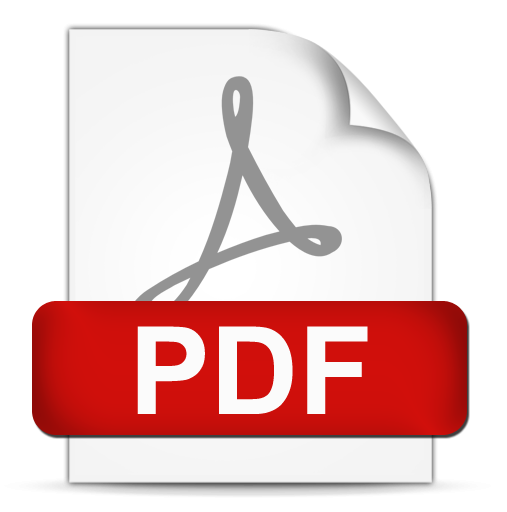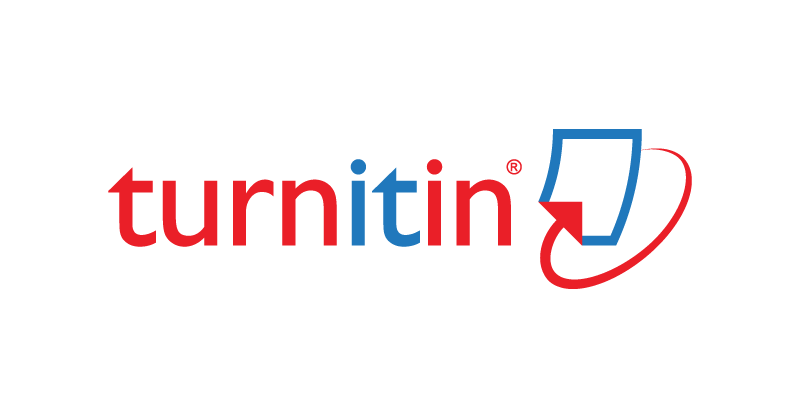The Isoflavone Contents of Devon 1 Soybeans during Fermentation and Processing into Soybean-Tempeh Steamed Buns
 Abstract Views:
166 times
Abstract Views:
166 times
 PDF Downloads:
14 times
PDF Downloads:
14 times
Abstract
Abstract—The soybean Devon 1 variety is a superior variety developed in Indonesia. The isoflavone content makes this soybean a top choice for a functional food. However, fermenting soybeans into tempeh and processing them into other products can affect the final isoflavone content. The objective of this study was to analyze the total isoflavone and its derivatives content in Devon 1 soybeans, soybean tempeh, soybean tempeh flour, and buns made from tempeh flour. The content of each isoflavone type was determined by high-performance liquid chromatography at λ249 and λ260 nm wavelengths. The buns were made from tempeh flour with variations of tempeh flour substitution of 0, 10, 20, and 30%. The results showed that the fermentation of Devon 1 soybeans and further processing of tempeh significantly altered the isoflavone components and content. The concentrations of daidzin and genistin in tempeh were decreased, while daidzein and genistein were increased. Further processing of tempeh into flour increased all isoflavone levels significantly, which might be caused by the isoflavone transformation during drying and enzymatic activity. Substitution of wheat flour with soybean tempeh flour increased these four isoflavones content of the buns. Therefore, tempeh flour made from Devon 1 soybeans has the potential to be used as a functional food ingredient rich in bioactive compounds that promote health.
Keywords: flour, heat, isoflavone aglycones, isoflavone glycoside, soybean tempeh
Abstrak—Kedelai varietas Devon 1 merupakan varietas unggul yang dikembangkan di Indonesia. Kandungan isoflavonnya menjadikan kedelai ini sebagai pilihan utama untuk pembuatan pangan fungsional. Namun, proses fermentasi kedelai menjadi tempe, serta pengolahan lebih lanjut menjadi berbagai produk turunan dapat memengaruhi kandungan akhir isoflavonnya. Penelitian ini bertujuan untuk menganalisa kandungan total isoflavon dan turunannya pada kedelai Devon 1, tempe kedelai, tepung tempe kedelai, serta bakpao yang dibuat dari tepung tempe. Kandungan masing-masing jenis isoflavon diuji menggunakan kromatografi cair kinerja tinggi pada panjang gelombang λ249 dan λ260 nm. Adapun bakpao dibuat dari tepung tempe dengan variasi substitusi tepung tempe sebesar 0, 10, 20, dan 30%. Hasil penelitian ini menunjukkan bahwa fermentasi kedelai Devon 1 dan pengolahan tempe lebih lanjut secara signifikan mengubah komponen dan kandungan isoflavon. Kandungan daidzin dan genistin dalam tempe menurun, sedangkan kandungan daidzein dan genisteinnya mengalami peningkatan. Pengolahan tempe menjadi tepung lebih lanjut meningkatkan seluruh kandungan isoflavon secara signifikan, yang kemungkinan disebabkan oleh transformasi isoflavon selama proses pengeringan dan aktivitas enzimatis. Substitusi tepung terigu dengan tepung tempe meningkatkan kandungan keempat jenis isoflavon pada bakpao. Dengan demikian, tepung tempe kedelai Devon 1 berpotensi digunakan sebagai bahan pangan fungsional yang kaya akan senyawa bioaktif untuk menunjang kesehatan.
Kata kunci: aglikon isoflavon, glikosida isoflavon, pemanasan, tempe kedelai, tepung
Downloads
References
Roswita R, Yohana, Abdullah S. PERTUMBUHAN DAN HASIL TIGA VARIETAS UNGGUL KEDELAI PADA LAHAN SAWAH TADAH HUJAN DI KABUPATEN PASAMAN, SUMATERA BARAT. Jurnal Pembangunan Nagari. 2020;5(2):225–34. Available from: https://ejournal.sumbarprov.go.id/index.php/jpn/article/view/186
Yulifianti R, Muzaiyanah S, Utomo JS. Kedelai sebagai Bahan Pangan Kaya Isoflavon. Buletin Palawija. 2018;16(2):84–93.
Krisnawati A. Kedelai sebagai Pangan Fungsional Kedelai sebagai Sumber Pangan Fungsional. Iptek Tanaman Pangan. 2017;12(1):57–65.
Hasanah SU, Sukrasno S, Hartati R, W DP. Perbandingan Kandungan Genistein Pada Berbagai Varietas Kedelai (Glycine max) Di Indonesia. Jurnal Penelitian Pertanian Tanaman Pangan. 2020;4(2):113–8.
Wu JY, Wee S, Ler SG, Henry CJ, Gunaratne J. Unraveling the impact of tempeh fermentation on protein nutrients: An in vitro proteomics and peptidomics approach. Food Chem. 2025;474:143154. Available from: https://www.sciencedirect.com/science/article/abs/pii/S0308814625004042
Liu WT, Huang CL, Liu R, Yang TC, Lee CL, Tsao R, et al. Changes in isoflavone profile, antioxidant activity, and phenolic contents in Taiwanese and Canadian soybeans during tempeh processing. LWT. 2023;186:115207. Available from: https://www.sciencedirect.com/science/article/pii/S0023643823007867
Silva F de O, Miranda TG, Justo T, Frasão B da S, Conte-Junior CA, Monteiro M, et al. Soybean meal and fermented soybean meal as functional ingredients for the production of low-carb, high-protein, high-fiber and high isoflavones biscuits. LWT. 2018;90:224–31. Available from: https://www.sciencedirect.com/science/article/pii/S0023643817309295
Borges CWC, Carrão-Panizzi MC, Mandarino JMG, Silva JB da, Benedetti S, Ida EI. Contents and bioconversion of β-glycoside isoflavones to aglycones in the processing conditions of soybean tempeh. Pesqui Agropecu Bras. 2016;51(3):271–9. Available from: https://www.scielo.br/j/pab/a/7hCd8zKjZGZ57sqpGxfTZCf/
MIZUSHINA Y, SHIOMI K, KURIYAMA I, TAKAHASHI Y, YOSHIDA H. Inhibitory effects of a major soy isoflavone, genistein, on human DNA topoisomerase II activity and cancer cell proliferation. Int J Oncol. 2013;43(4):1117–24. Available from: https://www.spandidos-publications.com/ijo/43/4/1117
Spagnuolo C, Russo GL, Orhan IE, Habtemariam S, Daglia M, Sureda A, et al. Genistein and Cancer: Current Status, Challenges, and Future Directions. Advances in Nutrition. 2015;6(4):408–19. Available from: https://www.sciencedirect.com/science/article/pii/S2161831322009012?via%3Dihub
Jheng H, Hayashi K, Matsumura Y, Kawada T, Seno S, Matsuda H, et al. Anti‐Inflammatory and Antioxidative Properties of Isoflavones Provide Renal Protective Effects Distinct from Those of Dietary Soy Proteins against Diabetic Nephropathy. Mol Nutr Food Res. 2020;64(10). Available from: https://onlinelibrary.wiley.com/doi/10.1002/mnfr.202000015
Peng Y, Shi Y, Zhang H, Mine Y, Tsao R. Anti-inflammatory and anti-oxidative activities of daidzein and its sulfonic acid ester derivatives. J Funct Foods. 2017;35:635–40. Available from: https://www.sciencedirect.com/science/article/abs/pii/S1756464617303444
Gómez-Zorita S, González-Arceo M, Fernández-Quintela A, Eseberri I, Trepiana J, Portillo MP. Scientific Evidence Supporting the Beneficial Effects of Isoflavones on Human Health. Nutrients. 2020;12(12):3853.
Mursyid, Astawan M, Muchtadi D, Wresdiyati T, Widowati S, Harnina Bintari S, et al. Evaluasi Nilai Gizi Protein Tepung Tempe yang Terbuat dari Varietas Kedelai Impor dan Lokal. PANGAN. 2014;23(1):33–42. Available from: https://www.jurnalpangan.com/index.php/pangan/article/view/48
Puspitasari A, Astawan M, Wresdiyati T. Pengaruh Germinasi Kedelai terhadap Komposisi Proksimat dan Komponen Bioaktif IsoflavonTempe Segar dan Semangit. PANGAN. 2020;29(1):35–44. Available from: https://www.jurnalpangan.com/index.php/pangan/article/view/460
Qu S, Kwon SJ, Duan S, Lim YJ, Eom SH. Isoflavone Changes in Immature and Mature Soybeans by Thermal Processing. Molecules. 2021;26(24):7471. Available from: https://www.mdpi.com/1420-3049/26/24/7471
Surya R, Romulo A. Steaming Process Does Not Affect The Antioxidant Activities of Tempeh Ethanol Extract. J Phys Conf Ser. 2020;1655(1):012023. Available from: https://iopscience.iop.org/article/10.1088/1742-6596/1655/1/012023
Istiani Y, Handajani S, Pangastuti A. Karakterisasi senyawa bioaktif isoflavon dan uji aktivitas antioksidan dari ekstrak etanol tempe berbahan baku koro pedang (Canavalia ensiformis). Biofarmasi. 2015;13(2):50–8. Available from: https://smujo.id/jnpb/article/download/2205/2062
Suharto KF, Soetjipto H, Martono Y. THE EFFECT OF TEMPE FERMENTATION TIME ON THE TOTAL PHENOLIC AND ISOFLAVONE GENISTEIN CONTENTS. ALCHEMY Jurnal Penelitian Kimia. 2017;13(2):228. Available from: https://jurnal.uns.ac.id/alchemy/article/view/5094
Zaheer K, Humayoun Akhtar M. An updated review of dietary isoflavones: Nutrition, processing, bioavailability and impacts on human health. Crit Rev Food Sci Nutr. 2017;57(6):1280–93. Available from: https://www.tandfonline.com/doi/full/10.1080/10408398.2014.989958
An JH, Ko MJ, Chung MS. Thermal conversion kinetics and solubility of soy isoflavones in subcritical water extraction. Food Chem. 2023;424:136430. Available from: https://www.sciencedirect.com/science/article/abs/pii/S0308814623010488
Xu B, Chang SKC. Total Phenolics, Phenolic Acids, Isoflavones, and Anthocyanins and Antioxidant Properties of Yellow and Black Soybeans As Affected by Thermal Processing. J Agric Food Chem. 2008;56(16):7165–75. Available from: https://pubs.acs.org/doi/10.1021/jf8012234
Hsiao YH, Ho CT, Pan MH. Bioavailability and health benefits of major isoflavone aglycones and their metabolites. J Funct Foods. 2020;74:104164. Available from: https://www.sciencedirect.com/science/article/pii/S1756464620303881
WAHJUDI M, TJAHYADI AL, ERAWATI CM, SUKWEENADHI J. Flour made from cacao-soybean tempeh fermented using soybean tempeh inoculum. Food Science and Technology. 2023;43.
Kim IS. Current Perspectives on the Beneficial Effects of Soybean Isoflavones and Their Metabolites for Humans. Antioxidants. 2021;10(7):1064. Available from: https://www.mdpi.com/2076-3921/10/7/1064

This work is licensed under a Creative Commons Attribution-ShareAlike 4.0 International License.
- Articles published in Keluwih: JKK are licensed under a Creative Commons Attribution-ShareAlike 4.0 International license. You are free to copy, transform, or redistribute articles for any lawful purpose in any medium, provided you give appropriate credit to the original author(s) and the journal, link to the license, indicate if changes were made, and redistribute any derivative work under the same license.
- Copyright on articles is retained by the respective author(s), without restrictions. A non-exclusive license is granted to Kluwih: JKK to publish the article and identify itself as its original publisher, along with the commercial right to include the article in a hardcopy issue for sale to libraries and individuals.
- By publishing in Keluwih: JKK, authors grant any third party the right to use their article to the extent provided by the Creative Commons Attribution-ShareAlike 4.0 International license.






